| Please access the following URL if you want to secure using SSL. All pages in the site will be secure pages. |
https://secure02.blue.shared-server.net/www.fish-food.co.jp/message english 11.2023.html |
Welcome to FISH FOOD TIMES
Nov. 2023 issue No.239
![]()

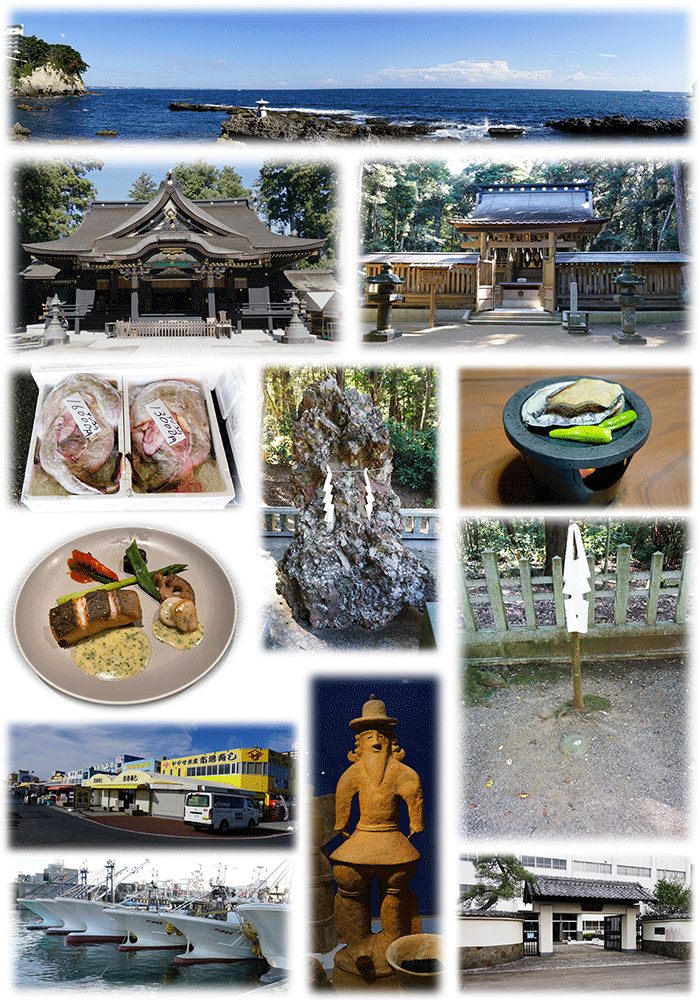
The origin of the land of the rising sun
The overseas edition of the November issue is suspended for the time being.
FISH FOOD TIMES has made it a tradition to have an overseas fish circumstance as the theme for its November issue. However, after the Thailand/Bangkok edition in 2019, the overseas edition had to be put on hold since 2020 due to restrictions on overseas travel due to the new coronavirus. Starting this year, after a three-year hiatus, we were planning to revive the overseas edition in the November issue, but we were unable to make the overseas edition the theme this year as well. Not only that, but rather than taking a break from it for the time being, I have decided to ``cancel'' it.
The reason is environmental changes. One of these is the impact of recent changes in the health status of multiple family members. Secondly, due to the rising costs due to the weak yen, I had no choice but to hesitate in planning an overseas trip. Thirdly, the domestic fish situation edition, which lasted for three years starting in 2020, often made me realize the depth of Japan's fish-eating culture. This is because I found this quite interesting and became interested in exploring more areas that were still unexplored in my own experience, and my state of mind changed and my interest in various parts of Japan increased significantly.
Some readers have openly said, ``I'm looking forward to reading the travelogue in the November issue,'' which makes me feel mixed feelings about whether I should be happy or sad. This is not a comment that I really welcome, but I took it positively as words of encouragement and backing for the author, and decided to go on a reporting trip at the end of October this year.
The area for this year's domestic fish circumstance exploration was ``Ibaraki/Chiba facing the Kashima Sea''. The center of the trip will be Ibaraki Prefecture, starting with the northernmost port of Kitaibaraki, Otsu Port, and traveling to Kashima Jingu over a four-day trip. On the fifth and final day, we planned a trip to Choshi Fishing Port in Chiba Prefecture, which boasts the largest catch in Japan.
The reason why I chose this location is that I wanted to visit Kashima Jingu in Ibaraki Prefecture and Katori Jingu in Chiba Prefecture, two of Japan's three major shrines that I had not yet visited. Second, I wanted to know the fish situation regarding monkfish, which is a representative fish of Kitaibaraki. Thirdly, I wanted to see for myself what Choshi Port is, which boasts the largest catch of fish in Japan.
In addition to that, this is something like a bonus. I received an invitation from a senior member of the Judo Interest Group at my university, where I was a member about 50 years ago, to attend a class reunion that was being held for the first time in about five years. Since the venue was in Tokyo, I decided to create an itinerary that included the date and time of my participation there.
Head to Kitaibaraki in search of monkfish dishes
Since the class reunion was scheduled for the evening of October 27th, I departed from Fukuoka Airport on the morning of October 23rd (Monday) and headed for Otsu Town, the northernmost tip of Ibaraki Prefecture. My wife also accompanied me on the reporting trip at the end of October for the November issue, including overseas, except for Asia, up until the Aomori edition in 2020. However, the following two years of reporting trips were carried out by the author alone. The reason for this is that my wife's knee osteoarthritis has gotten progressively worse, and although it doesn't seriously interfere with her daily life, it has basically become difficult for her to walk long distances on trips at the same pace as the author. . For this reason, this was my third solo reporting trip, following the "Kinki/Nanki Edition" in 2021 and the "Tottori/Shimane Edition" in
However, traveling alone can be quite difficult when it comes to accommodation. I had a hard time finding accommodation in Tottori and Shimane last year, so I was prepared this time as well. Especially at high-quality Japanese-style inns, there is a high possibility that you will be refused accommodation if you are alone. The same thing applies to guesthouses, and even if there is space at a guesthouse that prides itself on its high-class cuisine, you will often be turned away if you are alone. This time in Kitaibaraki, I was refused reservations from many hotels. At the guesthouse where I finally decided to stay, the person in charge on the phone was reluctant to make a reservation, asking, ``Um... is it just for one person?'' However, they finally accepted my offer on the condition that the night's stay was 11,000 yen and half board included. The image below is the accommodation we stayed on on the first day.
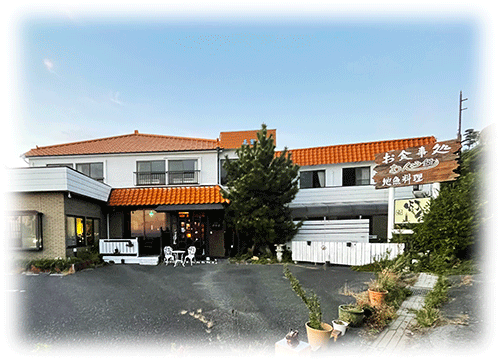
I looked up pictures of the restaurant online and saw a sign with large letters that said "monkfish," so I made a reservation with high hopes for this dish. However, the food content was at the level shown in the image below. The one on the lower left is a monkfish hotpot, which was placed on the dining table as a hotpot from the beginning.

Although not shown in this image, fried Greeneyes and boiled tofu were added to this, and the red sea bream figure sashimi was topped with three pieces each of flounder and red sea bream. Just to be sure, I did not choose the direction of the red sea bream figure sashimi this way, but rather that it was oriented this way from the beginning.
In fact, I was the only person staying at the inn that day. The owner, a man who must be in his 60s, had everything prepared by himself. This person lived in Joso City, Ibaraki Prefecture, about 140 km away from this guesthouse, and his main occupation was farming. In our conversation the next morning, I learned that he only comes to this inn to work when he has a reservation for accommodation, and that he does this business in his time off from farming.
It is said that the founder of this store had to part with it for some reason, and this person purchased it. He is said to be involved in a wide variety of other businesses, including parking lot management and apartment management. He had an unusual background, having graduated from the Faculty of Agriculture at a national university, worked for a long time at a major beer company, and then started doing this kind of work.
The above information was learned from the fact that he spoke to me during dinner and after breakfast, which was typical of a guesthouse. When I told him various things, such as the purpose of my trip and my hobbies, the owner was amused by me. On the morning of the second day, we ended up talking for about three hours, and we left the hotel at 10 o'clock, much later than planned.
By the way, the rice in the pot for breakfast was delicious, so I piled it into a relatively large bowl and ate three bowls of rice, emptying the pot. Then, the owner looked at the empty pot and said, ``Did you eat all of it?...I was planning on making the leftover rice for my own breakfast...'' I didn't know how to respond, so I replied, "It was so delicious that my 74-year-old old man ate it all." Then, he was told, ``I see, it's new rice grown in my own rice field, so it should be delicious,'' and although I was embarrassed, I accepted that explanation.
Izura Misaki Rokkakudo
On the second morning, we planned to eat at 7 o'clock and leave at 8 o'clock. However, as mentioned above, I had to talk to the owner until around 10 o'clock, and my plans were thrown off course. However, I had no regrets in the end, as we had a lot of fun talking and had a great time together. I started to hope that something unexpected and interesting would happen in a good way on the itinerary.
This guesthouse is located at a close distance that can be described as almost diagonally below the lighthouse in the image below, and you can also walk there. Its name is Cape Otsu Lighthouse, and it was built in 1960, but it was damaged in the Great East Japan Earthquake and was rebuilt in 2012, and it is now a state-of-the-art lighthouse that uses solar power.
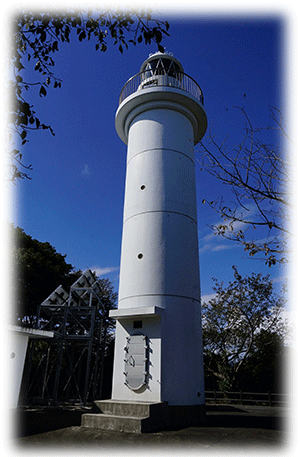
And less than 5 minutes by car from there is Ibaraki University's Izura Institute of Art and Culture. The facility was built by Tenshin Okakura, who visited Izura, Otsu Town in 1903 (Meiji 36) and liked the place so much that he decided to live there. The name derives from the fact that this related facility was built after that.
Two years after Tenshin Okakura began living there, he built the hexagonal hall shown in the image below on top of a protruding cliff. And here, while listening to the sound of the waves in the Pacific Ocean, he was said to have thought about various things.
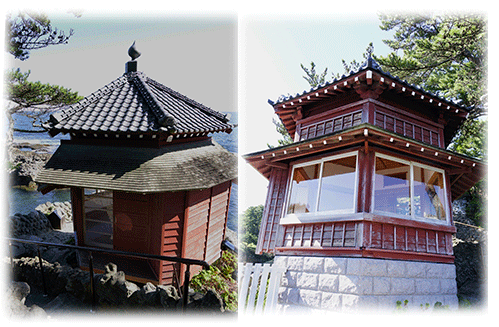
Later, the Japan Art Institute was moved to this location, and his disciples, including Yokoyama Taikan, moved here with their families and worked hard on their art.
It is not easy to explain Tenshin Okakura here, but I will do so in just a few words. He is one of the people who helped establish the concept of Japanese art after the Meiji era, and was involved in the founding of what is now Tokyo University of the Arts and served as its first principal. During the Meiji period, he was fluent enough in English to act as an interpreter, and was one of the people who contributed to making Japanese and Asian art known to the world.
The image below shows a landscape that an artist who was internationally active during the Meiji era fell in love with.

In the image above, you can see a stone lantern set on top of a rock that juts out from the quay into the sea. This seems to be because this landscape was likened to a Japanese-style garden. On this day, the clear blue sky and the calm blue sea on the horizon divided the landscape into two, recreating the spectacular view that Tenshin Okakura had fallen in love with.
Fisheries History Museum
After visiting the Tenshin Museum of Art from Rokkakudo, I headed to the Kitaibaraki City Fisheries History Museum, Yo Soro, which is about a 10-minute drive away. This place is adjacent to Otsu Fishing Port, and the "ceremonial boat'' used in Otsu Town's big festival "Otsu Ofune Festival'' was on display. The words "Yo Soro'' are nautical terms and are a steering command that means to make the ship go straight. It is often uttered after turning the wheel to say, "I'm fine with the direction I'm facing.'' It is written as "宜候'' in kanji and uttered as "Yo・Soro'', which also means "Good''.
This museum displays the actual ships used for the festival, and doubles as a ship hangar. Here, the staff at the museum give detailed explanations, mainly about the festival boats, so it's easy to understand.
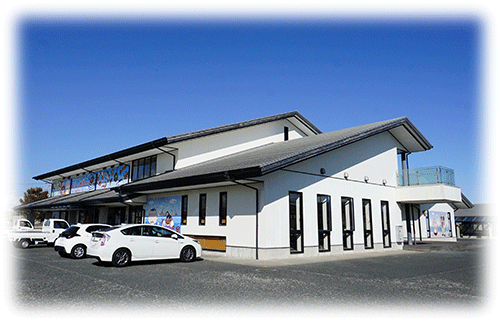
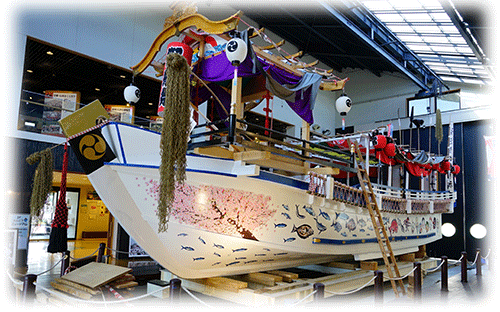
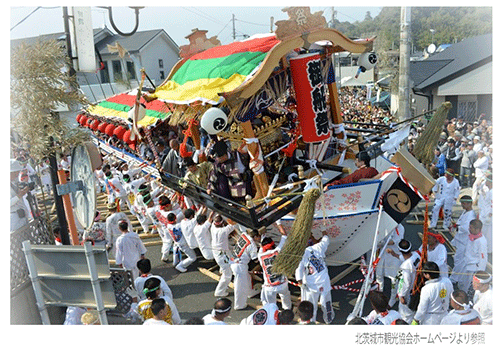
| Ofune Festival in Hitachiotsu, a nationally designated intangible folk cultural property |
|---|
| It is a large spring festival held once every five years from May 2nd to 3rd at Sawawachigi Shrine in Otsu Town. The Ofune festival, which is designated as a nationally designated important intangible folk cultural property, depicts seafood on both sides of the god's boat. The god's boat carrying the mikoshi is paraded through the town by around 300 pullers to the tune of Ofune songs and musical accompaniments sung by the water lord (Utako). There are no wheels on the bottom of the boat, but 100 wooden frames called sorobans are laid out in a cross-shaped pattern, and 20 to 30 young men attach themselves to the edge of the boat and swing it from side to side while pulling it as if it is sliding on the wooden frames. (Excerpt from the Kitaibaraki City Tourism Association website) Video https://www.youtube.com/watch?v=2hod1RRCBfQ |
Inside the museum, there was an easy-to-understand display of information about the monkfish, which is the representative fish of Kitaibaraki, and I thought that one of the purposes of my trip was realized here in an interesting way.
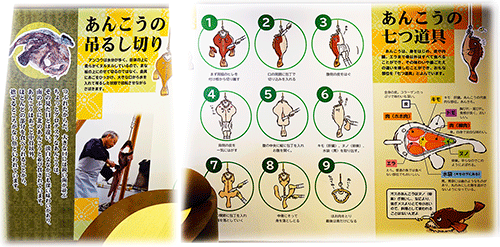
When I left the museum, there were many restaurants on the same premises, and next to it was the Otsu Fisheries Cooperative Market Restaurant, so I decided to have lunch there.
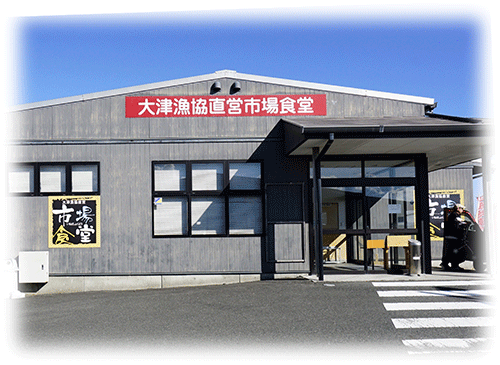
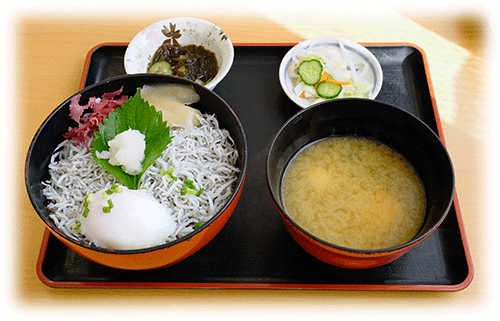
I had high expectations for the food since it was a sign called Ichiba Shokudo, so I ordered a kamaage shirasu bowl for 1,400 yen. However, perhaps because the target customers are tourists, the kettle-fried whitebait was simply placed on top of the rice in the bowl. The seasoning was simply salty from the whitebait, so considering the price, I couldn't rate this dish very highly.
To Oarai's Kappo Ryokan Sakanaya Main Branch
After lunch, I decided to head to my accommodation in Oarai town, about 75km from there. On the way, I thought about stopping at Hitachi Seaside Park, but due to time constraints to tour such a vast park, I decided to stop at the Hozumi Residence, which was a more convenient place to visit.
We arrived at the Hozumi family residence, the former site of a wealthy farmer's house built in the late Edo period as a private residence, about 17 km from the Kitaibaraki City Fisheries History Museum, and spent about an hour there after 2:00 p.m. The finely constructed building in the image below is the gate that serves as the entrance, and is said to be an important cultural property designated by Ibaraki Prefecture, called Nagaya-mon.

When I passed through the gate, I found a main building with a splendid five-tiered thatched roof on a plot of 4,290 square meters.
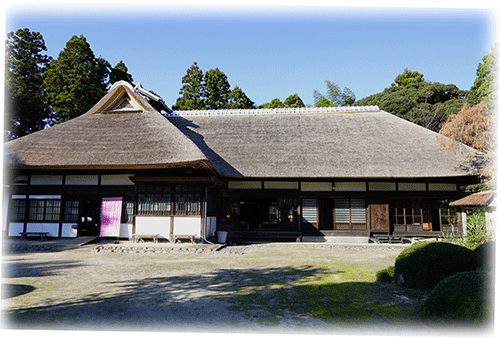
The plump appearance of this thatched roof gave a truly gentle impression, and I felt a kind of tolerant power that warmly embraced the people who lived there. And although it was described as having a five-tiered thatched roof, it was not simply five-tiered; various techniques had been applied throughout. I thought that one of the Japanese architectural styles was expressed here in the form of a private house.
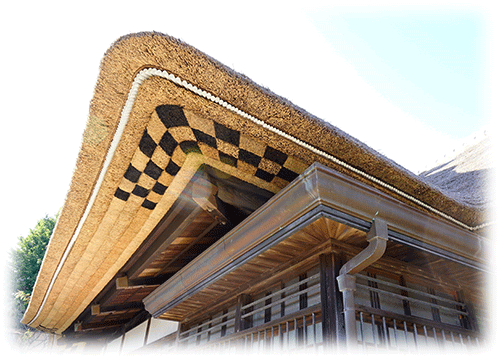
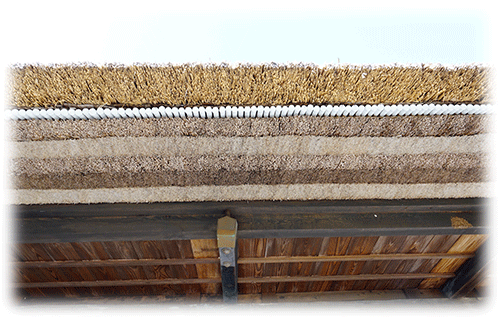
After finishing our tour of the Hozumi family residence around 3 o'clock, we headed to Oarai-cho, where we would be staying for the night. In front of Oarai Town is Hitachinaka City, and the Nakagawa River divides this area. Coincidentally, it has the exact same name as the Nakagawa River, which flows through the center of Nakagawa City, where the author lives, and I was curious as to why it was given the same character, Naka, so I looked into it, but I couldn't find an answer.
The Nakagawa River in Fukuoka Prefecture is a second-class river with a total length of 35 km, originating from Mt. Sefuri, flowing through the center of Nakagawa City and Fukuoka City, and flowing into Hakata Bay. There are three dams on this second-class river, and in addition to the dams, there are water facilities run by water users' associations, and the river is connected not only to Nakagawa City but also to Fukuoka City and Kasuga City. As a result, I feel that the amount of water has decreased dramatically compared to the past.
On the other hand, the Nakagawa River in Ibaraki Prefecture, the first class river I saw this time, was flowing at full capacity. It originates from Mt. Nasu (1,917m above sea level) located on the border of Fukushima and Tochigi prefectures. It is a first-class river with a trunk length of 150 km, flowing south through Nasunogahara in Tochigi Prefecture, entering Ibaraki Prefecture, and flowing southeast in the flat area before emptying into the Pacific Ocean. Comparing the two Nakagawa Rivers in this way, I was able to confirm with my own eyes that the Nakagawa River in Ibaraki Prefecture is a large river with an abundant amount of water that is completely different in scale from that in Fukuoka.
Then, we arrived at the Kappo Ryokan Sakanaya Honten, our accommodation for the second day.
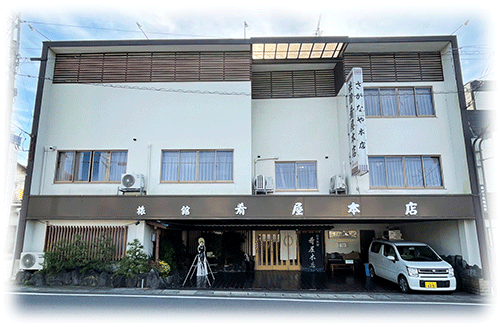
Our plan was to enjoy monkfish at a guesthouse in Kitaibaraki, so we opted for the "Abalone and Seafood Course'' which included two meals for 15,400 yen. There was a miscalculation with the monkfish on the night of the first day, so we should have had a monkfish dish here, but we decided that changing the course at the last minute would cause trouble, so we didn't change the course. The image below shows the contents of the dish.
| the Kappo Ryokan Sakanaya Honten "Abalone and Seafood Course'' | |
|---|---|
 |
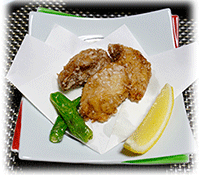 |
| living abalone | deep-fried Globefish (Freshly fried) |
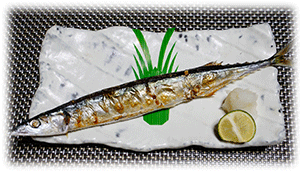 |
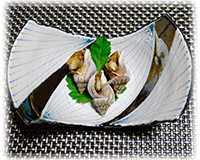 |
| Salt-grilled saury (freshly grilled) | Japanese ivory shell boiled food |
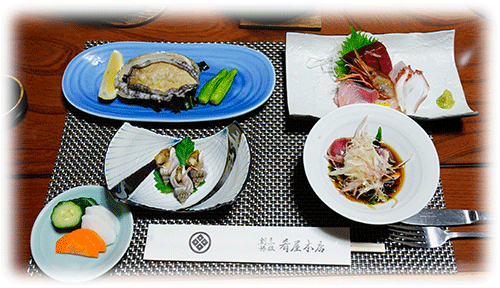 |
|
| Tuna, amberjack, flounder, local octopus, bonito seared sashimi (entire course meal) | |
Abalone is eaten as a steak rather than sashimi, and you cook it yourself by placing it on a griddle on a solid fuel stove.
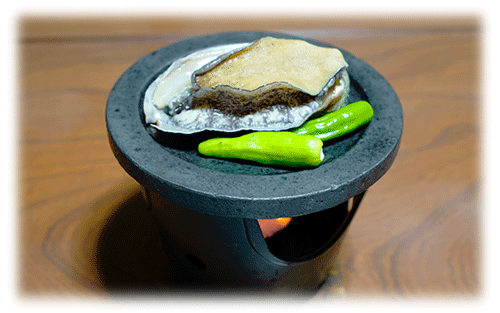
YouTube Abalone Burning Punishment
As expected from the name of the Kappo Ryokan, the food was made with carefully selected ingredients and seasonings, and I felt that everything was prepared by professionals. In this dish, the main ingredient, abalone, is the only one that I have to adjust to my own taste. It was, so to speak, a "Burning Punishment'' on the abalone, and I thought it was cruel to myself as I watched coldly as the abalone struggled under the heat of the stove. I recorded a 2 minute 20 second video of Burning Punishment, so if you have the time and interest, please take a look.
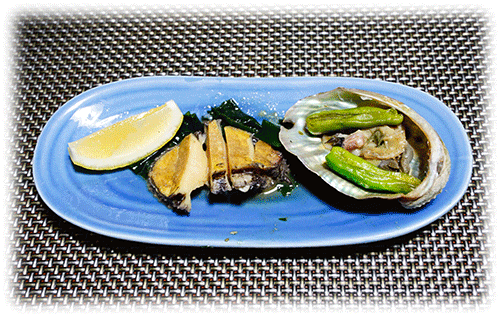
The image above shows the abalone cooked, cut with a steak knife, and before eating. The edible parts of the abalone that were removed from the shell seemed quite small, but even though I didn't add soy sauce or salt to the soft abalone, it had just the right amount of light saltiness and was delicious to eat.
(Incidentally, the next morning at this inn, the rice in the pot was delicious, just like the day before, and I ate it all. In this case, the amount was small, about two heaped bowls.)
Nakaminato Fish Market
On the third day, the priority destination is the Nakaminato Fish Market, which is adjacent to the Nakaminato Fishing Port in Hitachinaka City. The opening time was 9am, so I visited the Oarai Isosaki Shrine near the Sakanaya main store, checked out the situation at the Nakaminato Fish Market, and then headed to the Nakaminato Fish Market.
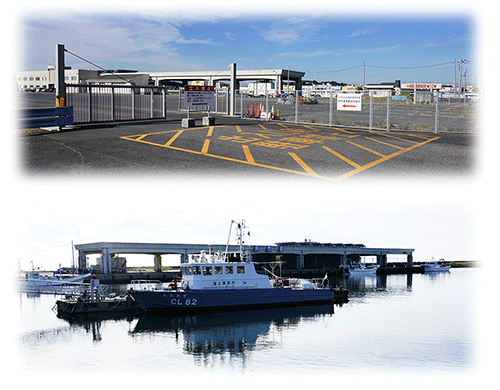
The image above shows the Nakaminato Fish Market. There were no fishing boats pulling in or landing fish, there were no people, and the entrance gates were closed, so it didn't look like a lively fish market.
On the other hand, when I looked at the quay on the land side, there were rows of shops with flashy signs.
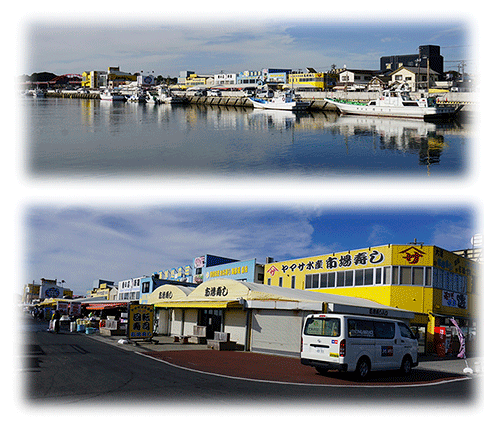
When I went there, I saw a number of fish shops lined up, selling a variety of fresh fish not only from the local area but from all over the country. I'll show you how it goes with just the images below, without any comments.
| A view of the fresh fish section in Nakaminato Fish Market | |
|---|---|
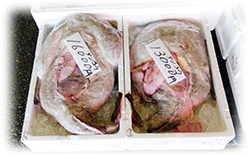 |
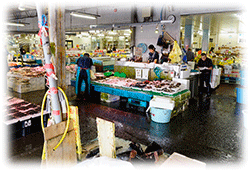 |
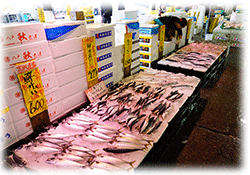 |
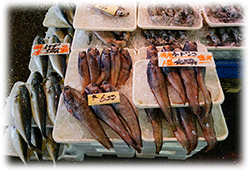 |
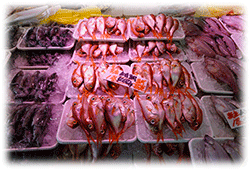 |
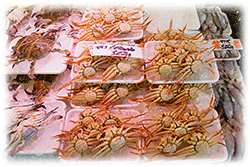 |
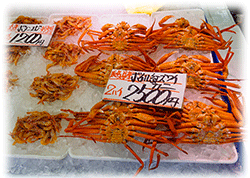 |
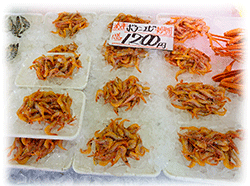 |
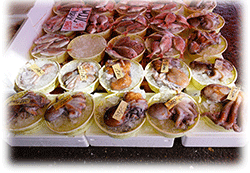 |
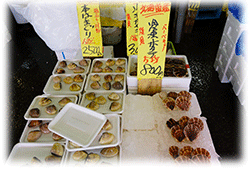 |
When I entered the Nakaminato Fish Market, I found a large monkfish in the first store. The author almost exclaimed, ``Wow, I finally met you...!'' The 8.8 kg was priced at 16,000 yen, and the 9.2 kg was priced at 13,000 yen, but 30 minutes later the 16,000 yen monkfish disappeared from the sales floor, so it must have been sold.
Looking at the sales floor, I got the impression that the variety of fish species was targeted at tourists from far away areas such as Tokyo, rather than local experts. The reason for this is that I myself went shopping for souvenirs there, and when I observed the people lining up at the cash register in front of and behind me, I noticed that many of them were dressed in non-local clothing. Another reason was that after checking out, there were many people waiting in line to request delivery.
The author thought. The existence of the Nakaminato Fish Market serves as an alternative to meet the needs of fish lovers who have given up on supermarket fish sections, which have lost their appeal due to poor selection, and who have lost their expectations of supermarkets.
From Oarai towards the inland areas of Mito and Tsuchiura
On this day, I had booked a hotel in Tsuchiura City, inland of Ibaraki Prefecture. Forty-six years ago, I was sent to study abroad at the supermarket where I worked at the time, and I stayed in a boarding school for half a year to study at Takegishi Meat College. I had been planning to visit there for the first time in a while.
The distance from Hitachinaka City to Tsuchiura City is approximately 60 km. Instead of going directly, I decided to go through Mito City and stop at Kairakuen, one of Japan's three most famous gardens. Visiting Kairakuen and the Tokugawa Museum was not my main purpose, but a sightseeing stop, so I will not write about it.
I left Mito just before 1:00 p.m., and since I didn't have anything urgent to do, I headed for Tsuchiura City instead of using the Joban Expressway, instead using the national highway and prefectural highway. Ibaraki Prefecture has only wide plains and some gentle hills, and there are almost no mountains, so I have no recollection of whether I ever passed through a tunnel in Ibaraki Prefecture. My impression of Ibaraki Prefecture while driving was that of a "continental landscape,'' and I rarely felt cramped or cramped.
I arrived at my destination, Takegishi Meat College, around 3:30 p.m. The journey here was so different from what it was 46 years ago that even though I was being guided by my car's navigation system, I doubted whether the directions were accurate. When I arrived, the gate of the school was a scene I remembered.
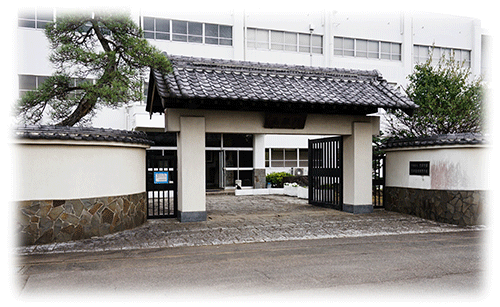
At that time, about 100 students were sent from supermarkets and meat specialty stores across the country for the six-month course, and about 30 for the one-year course. In the morning, there was practical training on butchering beef, pork, and chicken, and in the afternoon, there were lectures on related knowledge such as hygiene and counting. There were five classmates from the company I belonged to, and since we sent a total of six employees to study in a boarding school for six months, and they were paid, the total cost could be quite high. It seems likely that the company he worked for at the time made a drastic investment in the education of candidates who were enrolled in elite courses aimed at future managerial positions.
The author has been a fisheries consultant for over 30 years. At this school, I learned the basic knowledge of handling meat as an ingredient, and I am now able to apply that knowledge to the fisheries department in my current job, so I am truly grateful for the experience I had at this school.
The author worked in the fisheries department both before and after studying at Takegishi Meat College, so I learned the basic knowledge of handling fish purely through meat. Before I was dispatched to the school, I was strongly warned by the human resources manager, "Don't quit immediately after returning from school...'' However, due to major changes in the company itself, I was forced into a situation where I had no choice but to quit.
I didn't go inside through the main gate, but instead took in the surroundings and recalled the old days, spending about 30 minutes feeling nostalgic before heading back to the hotel.
It was just before 5 o'clock, so it was too early for check-in time. So I stopped by a relatively large shopping center called Pier Town in Tsuchiura City.
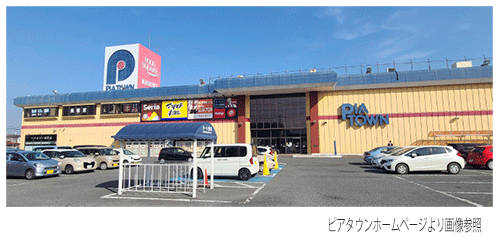
The supermarket inside was Kasumi, and there was a fish section with a streamlined and efficient selection that was typical of Aeon stores. I didn't find anything that particularly interested me, so I headed to the tenant zone, where I found a very interesting sales floor.
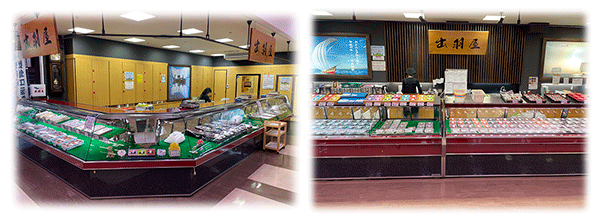
It was a tsukudani shop called Dewaya. The store was spacious and had a very luxurious feel, and it was a store that sold small fish such as smelt caught in Lake Kasumigaura in tsukudani. I was looking to buy smelt-related products in Tsuchiura City, so the timing was perfect for me to come across this store.
When I talked to the female clerk, I was told that this store has been in business since Pier Town opened 45 years ago. She was proud of the fact that the company had been around for such a long time, and the way she spoke could be interpreted as being the wife of the president of Dewaya. Following the recommendation of her proud sales clerk, she purchased the item pictured below.

The smelt with the Kasumigaura seal was 550 yen, and the Mysida was 400 yen. Dewaya was founded in 1930, and uses small fish caught in Lake Kasumigaura, as well as fish from the lake and the sea, and makes its tsukudani and dried sardines cooked one pot at a time at its main factory on the shores of Lake Kasumigaura. The sweet tsukudani made with a unique sauce has won the Minister of Agriculture, Forestry and Fisheries Award eight times so far at national seafood processing exhibitions.
On this day, I had intended to head to the inland area of Ibaraki Prefecture, but Tsuchiura City faces Lake Kasumigaura, the second largest lake in Japan, and the sight of Lake Kasumigaura gave me the feeling of being as big as the ocean. That is not surprising; in the past, Lake Kasumigaura was part of the Katori Sea, which had a large inlet where the sea entered deep inland from the direction of Choshi. It appears that it took on its current form as a freshwater lake after the mid-Edo period.
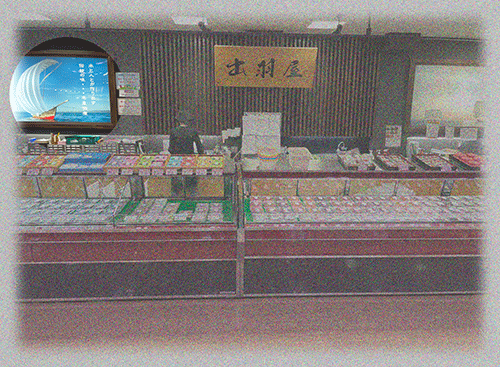
I really liked the way Dewaya's store was set up. I especially liked the image circled in the upper left of the image above. When you enlarge the image, it becomes the following image.
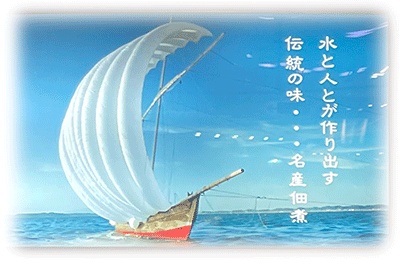
I felt that this truly symbolized the ocean-like Lake Kasumigaura. There probably aren't any sailing boats like this these days, and I was captivated by the elegance of the shape of its large sails
And that night was my first time at a hotel on this trip. ``Hotel Marroad Tsukuba'' is located a little far from Tsuchiura Station, and since I had done some research and found out that there were no izakaya restaurants around the hotel, I had decided to eat at the hotel's restaurant.
The image below shows the food I ordered at Sky Lounge Vojour on the 13th floor.
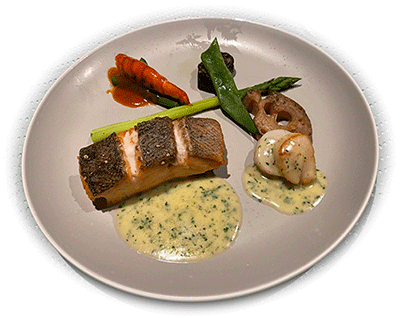
The dish, ``Salmon, Scallops, and Shrimp Poire,'' cost 4,000 yen. After drinking this and several glasses of beer and whiskey, the total bill at the restaurant was 10,350 yen. However, this time there was a ``Nationwide Travel Support Ibaraki Discount'', which included shopping coupons worth 2,000 yen each for Sakanaya Honten from the previous day and Marroad Tsukuba for this day. I decided to use all the coupons worth 4,000 yen at this restaurant, and ended up paying 6,350 yen. I felt like I was getting a great deal as the accommodation fee was discounted by 3,000 yen for each of the two days.
Eating while looking out at the night view in the sky lounge on the 13th floor of the hotel was not without the loneliness of being alone, but the alcohol of the beer and whiskey was a pleasant way to wash away the fatigue of the day.
From Hidakami ancient country to Choshi Port
Well, this day marks the fourth day, October 26th (Thursday). This day is a journey to visit the origins of Hidakami ancient country, the origin of "Japan, the Land of the Rising Sun.''
This trip's sub-theme is to visit two of the three major shrines, Kashima Shrine and Katori Shrine. I had always wondered why two shrines with the status of shrines, along with Ise Grand Shrine, existed so close to each other, so I was really looking forward to visiting these two major shrines for the first time.
On this day, I decided to take the route from my hotel in Tsuchiura City, passing through Ushiku Daibutsu, Katori Shrine, and Kashima Shrine, before heading to my hotel in Choshi City. I arrived at Higashi Honganji, the head temple of the Higashi Honganji branch of the Jodo Shinshu sect, where the Ushiku Daibutsu is located, around 8 o'clock. The image below doesn't really convey how big it is, but it is an incredibly huge Buddha.
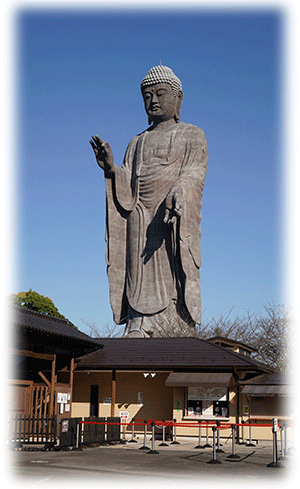
Ushiku Daibutsu is registered in the Guinness Book of World Records as the world's tallest bronze statue. I think you can get some idea of its size by looking at the following materials from the Ushiku Daibutsu homepage.
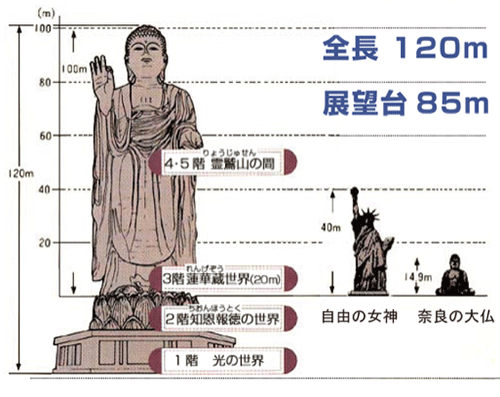
It is said that there is an elevator inside the Great Buddha's womb so you can see the view, but unfortunately, the park opened at 9:30, so I was only able to take photos from outside the wall. However, I only wanted to stop by this place for a short while, so I quickly departed and headed for Katori Shrine.

The journey to Katori Shrine was about 40 km, and took about an hour, and was a very gentle journey, with many unobstructed views unfolding one after another. Then, after this kind of scenery continued, a thick forest appeared, which turned out to be Katori Shrine.
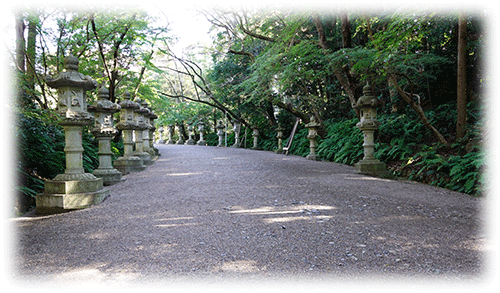
This is the precinct approach to the main shrine, and stone lanterns donated from all over the country were lined up on both sides.

This torii is a stone Myojin torii with a nuki in front of the main gate. Then, after passing through the main gate and passing through Romon, we arrived at the main hall of Katori Shrine. The thatched roof has a gentle curve and is truly elegant. The area under the futanoki was beautifully decorated in vermilion and green, giving it an elegance that was different from the five-tiered thatched roof of the Hozumi family residence from the previous day.
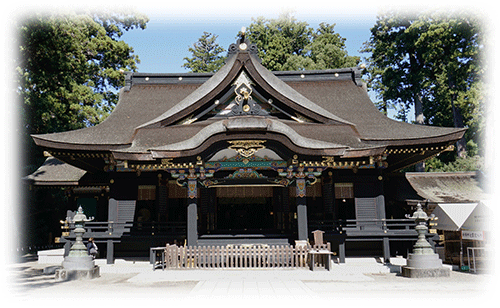
The author was wondering why two of the three major shrines, Kashima Jingu and Katori Jingu, exist so close to each other. However, that question was resolved by reading the explanation on the signboard before entering the approach to Katori Shrine.
.gif)
The enshrined deity is Futsunushi no Okami. The deity enshrined at Kashima Shrine is Takemikazuchinokami. These two gods went to Izumo Province and joined forces to receive the land of Ashihara no Chugoku from Ookuninushi no Kami. Its contents are presented here with illustrations.
In other words, Futsunushi no Okami and Takemikazuchinokami are the two gods who laid the foundation for the founding of Japan. Through this, I was able to understand that the two gods were counted as two of the three great shrines, regardless of their closeness.
Next I headed to Kashima Shrine, which is 25km away and about 50 minutes away.
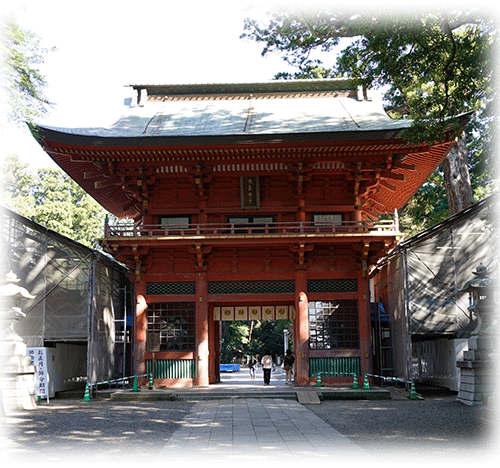
The image above is of Kashima Jingu's Romon, but the left and right sides are covered with construction work, and construction scaffolding has been erected around the main shrine and worship hall to the point where you can barely see the outside. This was said to be in the middle of a major renovation for the Reiwa era, so the timing was not very good.
So, I decided to visit Okunomiya, the original main shrine building.
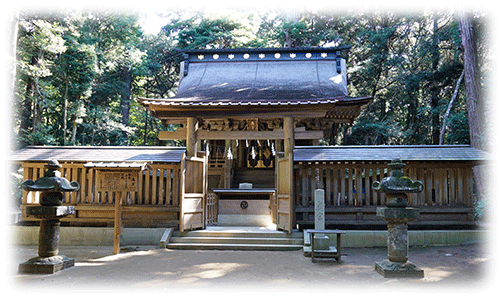
The torii in front of Okunoniya is a stone Myojin torii with a nuki, and I could feel the similarities with Katori Shrine. On the way to Okunomiya, I encountered something very interesting that I had not expected at all.
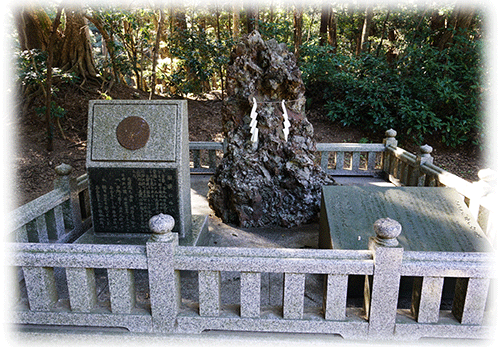
It is said that there are at least 35 cases of this "sazareishi'' throughout the country. It is unclear whether this sazareishi is related to the one sung by Kimigayo, but it is at least a very large and magnificent stone.
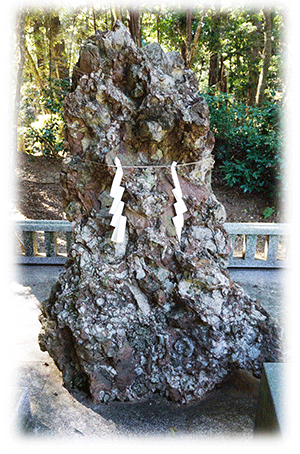
In Japan, pebbles have been called sazareishi since ancient times. The Kokin Wakashu included a song that was adopted as the national lyrics of Japan and came to be called "Kimigayo.'' In the preface of the Kokin Wakashu, it is made clear that the belief in megaliths is not related to the single poem "Kimigayo.''
Next is the keystone in the image below.
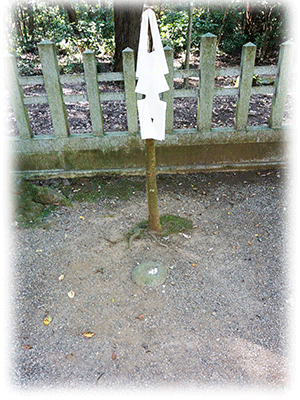
Although only a small part of the stone is visible, it is said that in the past, no matter how much people dug around this stone for seven days and nights, they could not dig it all up, and as they dug, it grew in size, and there was no end to it. The keystone is also called Mimashiishi or Ishinomimami, and is a sacred stone that is said to be able to protect against earthquakes.
After visiting both Katori Shrine and Kashima Shrine, I was once again convinced of the existence of Hidakami ancient country.
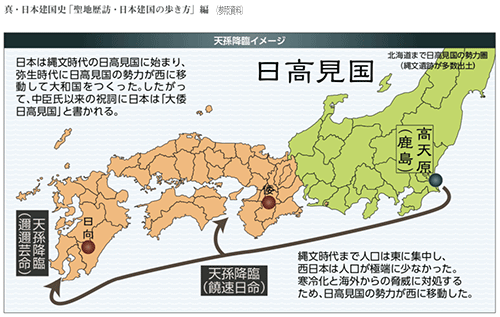
The diagram above is a reference to the PDF document "History of the Founding of Japan'' written by Professor Emeritus of Tohoku University, Hidemichi Tanaka, and I would like to refrain from commenting on this content as a complete amateur. I'll have to leave it to the readers to decide whether or not to trust this diagram, but I also find the following diagram drawn from the same document to be persuasive.
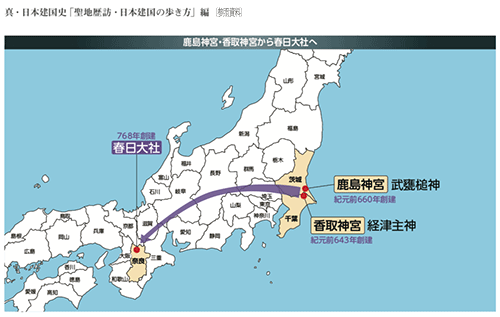
There seem to be many stories called myths around the world, but it is said that there are no other stories that are as historically consistent as Japanese myths. After Japan was defeated in the Pacific War, the "wrong postwar history education that ignored Japanese mythology and distorted history'' was imposed on Japan, and Japan was tormented by self-deprecating thoughts. I would like to reconsider what is actually true about Japanese history, and what historical facts are not distorted.
I left Kashima Shrine around 2:00 pm and headed to Choshi City. I arrived in Choshi City just before 4pm, so I headed straight to Inubosaki Lighthouse, then turned back and confirmed the location of Choshi Fishing Port, in preparation for my visit to Choshi Fishing Port the next morning.
I was eager to eat as many delicious fish as I could in Choshi City. However, the pattern was exactly the same as last year's Sakaiminato. When I went to the izakaya recommended by the hotel front desk, it was fully booked and I couldn't get in. In the end, the only place I could go was a regular yakitori restaurant you could find anywhere. Once again, they were at the mercy of a food environment that disregarded the local economy, something that could be described as "producer poverty,'' which is common in fishing cities that boast large catches.
Choshi Fishing Port, Haniwa Museum
This day marked the last day of our trip to explore Hidakami ancient country and the Kashima Sea. This year's November issue was quite a long article, but I wonder how many readers took the time to read it this far. I'm sorry that I ended up writing so much, but I'd like you to hang out with me just a little bit longer.
I arrived at Choshi fishing port just before 5 o'clock. However, there are no people everywhere and it is lifeless. The image below was taken the previous evening at a fishing boat dock. There were dozens of fishing boats moored there, probably 6 rows horizontally and 10 rows vertically. When I saw this, I thought that Choshi Fishing Port was amazing. And seeing this sight made me look forward to the next morning.
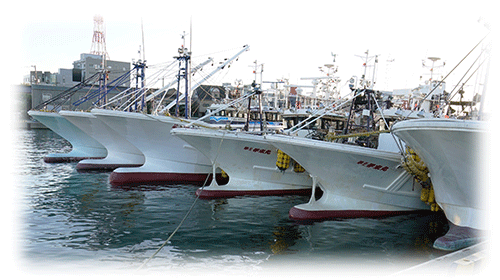
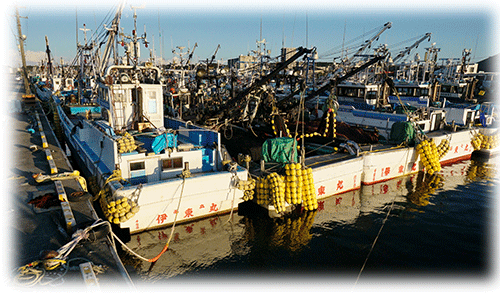
However, when I went to Choshi Fishing Port at 5 a.m., there was no one at any of the first, second, or third wholesale markets, which are all within a distance of about 4 km. No matter how many times I went back and forth over the 4km distance, there was no sign of it, and even though I moved around for an hour and a half, I ended up not harvesting anything.
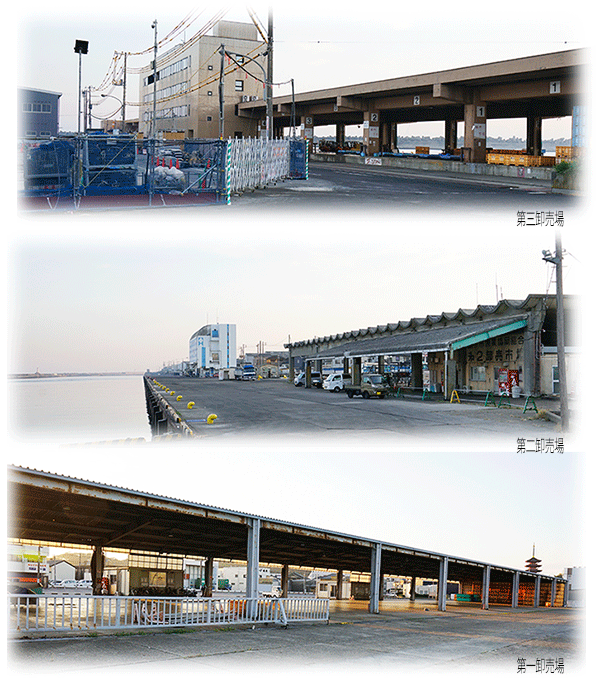
In reality, I probably should have carefully researched the opening dates of the market, but this was the only day I had on my itinerary, and I decided that I couldn't choose another day. As a consolation, I told myself that just being able to see what Choshi fishing port was like, boasting the highest catch in Japan, was a good thing.
Next, the final destination was the Shibayama Kofun Haniwa Museum, located in Shibayama Town, Chiba Prefecture, about 50 km and an hour away from Choshi Fishing Port.
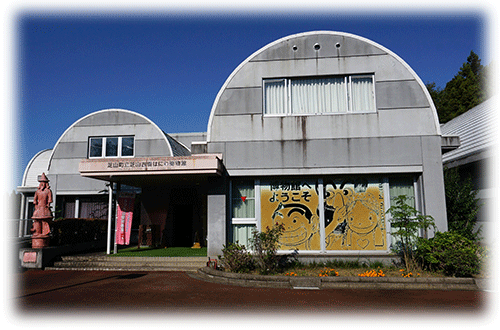
Once you enter the museum, you will be able to examine the Kofun period through excavated artifacts of various sizes, including Haniwa, as well as the types of Kofun and the distribution map of Kofun.
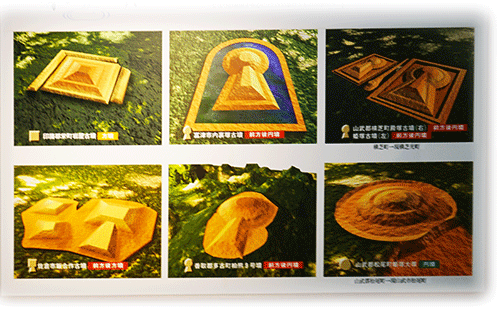

The image below shows the haniwa on display.
| 出土した埴輪の数々 | |
|---|---|
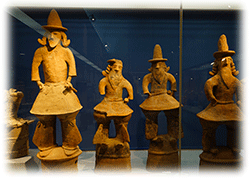 |
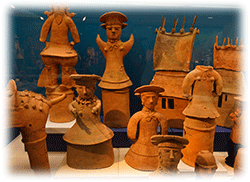 |
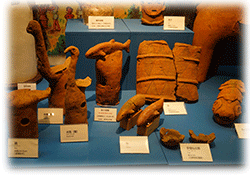 |
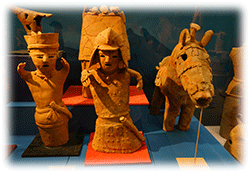 |
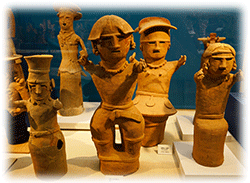 |
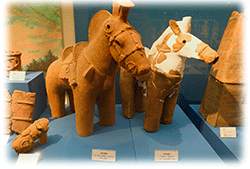 |
The image below is probably the easiest to understand what a haniwa is.

When you look at this haniwa, do you think it's Japanese? This was definitely excavated from a tomb in Japan during the Kofun period, from 400 to 600 AD.
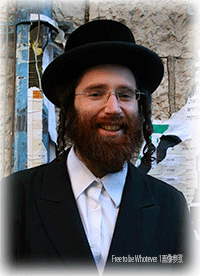
Please compare it with the current image above, it looks exactly like Haniwa. This is typical of a person who practices devout Orthodox Judaism. In particular, the Mizura with its long mantle and long beard are very similar to the Haniwa excavated from Kofun, Japan.
Hidomichi Tanaka, a professor emeritus at Tohoku University, claims that these Haniwa are Jewish, not Japanese. In other words, in the Jomon period, which preceded the Kofun period, sun-worshiping Jews were coming to the ``Land of the Rising Sun'' at the eastern end of the world. The evidence for this is that Japanese DNA has a lot of Y-chromosome D lineage, which is an ancient lineage that is rare in the world and is common among ethnic groups living in the Mediterranean. In Japan, there are many D1b of haplogroup D, and there are many D1b in Okinawa, but in China and South Korea, there are many haplogroup O, among which O2 is the most common, O1b is the second, and the Y chromosome D lineage is very small.
In other words, it is assumed that since the Jomon period, 10,000 years ago, let alone the Kofun period, the indigenous Japanese people had been interbreeding with Jews who had come from as far away as the Middle East. It is thought that their blood ties to Jews are stronger than their blood ties to Chinese or Koreans.
If I go too deep into this topic, it will deviate from the theme of FISH FOOD TIMES, so I would like to stop here. However, I would like to tell our readers that it is really interesting to learn about real history on your own, away from the false history education that was covered up or distorted after the war.
Summary of the trip
On the final day of this trip, October 27th (Friday), after leaving the Shibayama Kofun Haniwa Museum, I returned the car I had borrowed from my daughter who lives in Tokyo, and headed to the venue for the class reunion, which was to meet at 4pm.
The participants at the reunion naturally thought that I had left Fukuoka this morning for Tokyo, but when I told them that today was the fifth day since I left Fukuoka, they all reacted with surprise. . Things didn't go as planned during these five days, and there were a few things that threw me off track, but overall I feel like it was a very fulfilling trip.
In particular, there were some long-standing questions that were resolved through this trip, which was really rewarding. Also, as I mentioned above, I was able to understand why Kashima Jingu and Katori Jingu are so close to each other. Another thing that has been resolved is the cause of the end of the Kofun period, which lasted about 300 years. This is because with the introduction of Buddhism,"there was a shift towards building temples rather than building kofun.''
You could say that you didn't know the above because you didn't study enough, but for me, this was unknown. Since each person has their own differences in knowledge, experience, age, etc., the author did not have the opportunity to learn much about the Kofun period.
When it comes to traveling, it may be difficult to accumulate knowledge and experience if you just move around aimlessly. I believe that if you travel with a clear main theme and sub-theme, you will reap great rewards. However, even if you don't have a specific goal in mind, even if you encounter something that wasn't planned, or even if you make a mistake due to a miscalculation, it will be etched in your memories, for better or for worse.
At the end of a trip, people tend to remember the "negative side events'' better. And in hindsight, those things are more deeply engraved as memories. You may end up regretting those negative memories later on, but rather, they will become "memories that make you nostalgic for them and make you smile.''
Life is about making memories. If possible, I would like to end my life with as many "good memories'' as possible.
| Please access the following URL if you want to secure using SSL. All pages in the site will be secure pages. |
https://secure02.blue.shared-server.net/www.fish-food.co.jp/message english 11.2023.html |
An opinion and the communication are to iinfo@fish food times
Date of updating 1 Nov. 2023
